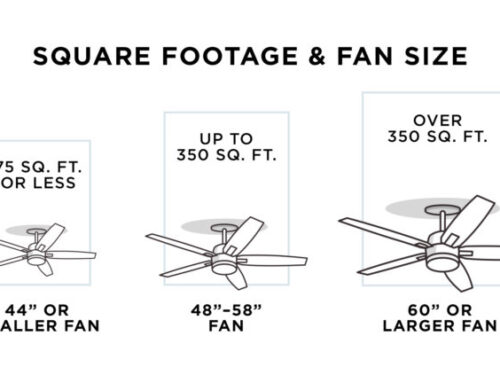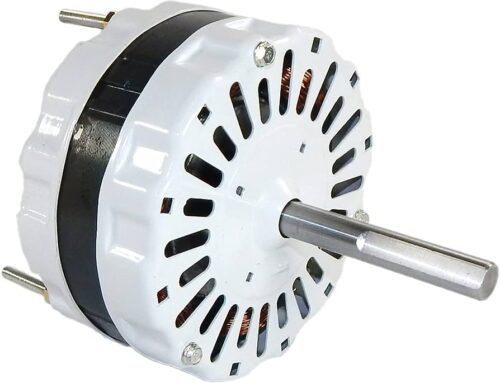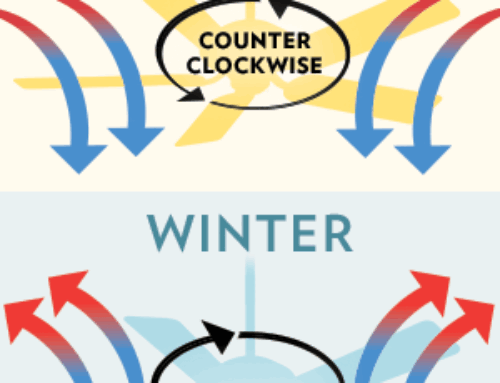We all know that ceiling fans are helpful in the hot summer months at creating a breeze, but did you know that they can also be used in the winter months to help circulate warm air?
The secret to effective fan use year is the fan direction, or spin direction. Just by circulating the air in a room, a ceiling fan can help make a room either feel cooler or stay warmer, depending on which way it is set to spin.
Note that not all fans feature reversible direction motors, so make sure the fan you are considering purchasing has this feature.
Ceiling Fan Direction in Summer
- In summer, set your fan to spin counter-clockwise.
- Setting your fan motor to spin counter-clockwise drives air downwards.
- This creates a “wind-chill” effect as the air makes contact with your skin. While the air is technically not cooled by the fan, it can still feel as much as 10 degrees cooler.
- This allows you to set your thermostat higher by around 4 degrees, saving you money on air conditioning costs.

Ceiling Fan Direction in Winter
- In winter, set your fan to spin clockwise.
- Setting your fan motor to spin clockwise pulls air upwards.
- Why do this? Warm air rises causing it to gather near the ceiling. Clockwise spinning fans redistribute this air throughout the room.
- Doing so allows you to set your thermostat lower, helping to trim your heating bill.
Buying Tip: To take advantage of the advice above, check the “Features” tab on any fan product page on our site to confirm that it comes with a reversible motor.
How Do I Switch Fan Direction?
It’s pretty simple and straightforward to adjust the direction of your ceiling fan.
- Turn your fan off and wait for it to stop spinning.
- Look for a switch on the body of the fan, or a setting on your fan remote control if it has one.
- You may need a step ladder to reach the switch.
- Toggle the switch into the new position, or use the settings on your remote.
- Restart your fan to check that it is moving in the right direction.
Will Changing This Save Me Money?
Yes! According to estimates by the Energy.gov site of the U.S. Department of Energy, using a ceiling fan in conjunction with an air conditioner will allow you to raise the thermostat setting about 4-degrees with no reduction in comfort.
Therefore, a general rule of thumb is that for every degree of temperature you set your thermostat forward, you will reduce you air conditioning costs by 3 percent over a 24 hour period, this according to Indiana-Michigan Power.
In winter, you can expect an even larger impact, with costs cut by 8 to 10 percent.
Now it is true that running your fan uses energy, but it’s about the same as a regular incandescent bulb, far less than your air conditioning or heating unit.
Direction and Hanging Height
To realize these savings, and to get the maximum cooling and warming impact, remember that your fan needs to be installed properly.
Most importantly, it should hang between seven and nine feet from the floor with a minimum 10-inch clearance between the ceiling fan blades and the ceiling. If you have very high or vaulted ceilings, use a downrod to get the right hang height. See our ceiling fan buying guide below for a video and more.





Leave A Comment